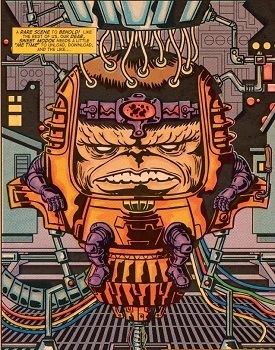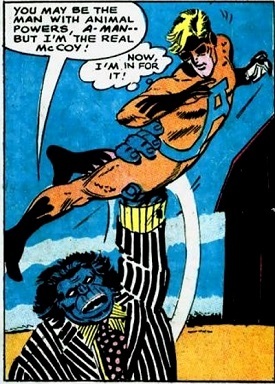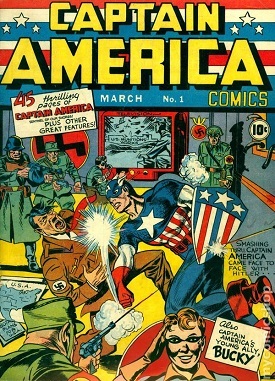Read This: The Legion of Regrettable Supervillains
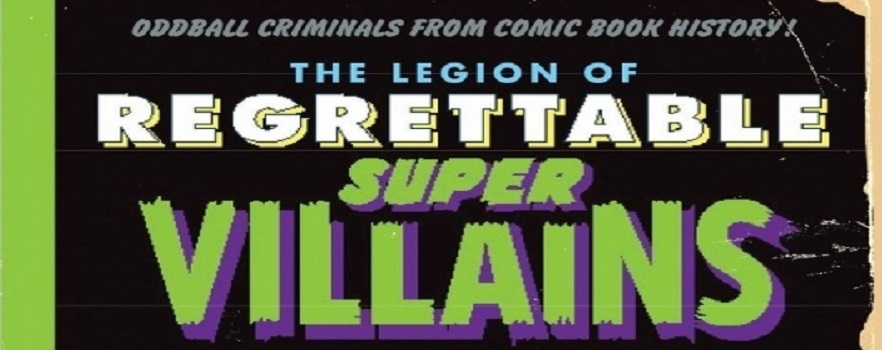
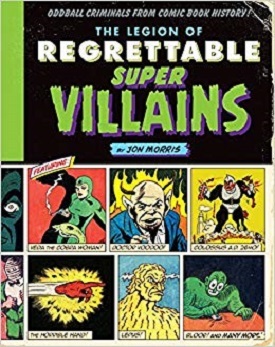 Jon Morris’s The Legion of Regrettable Supervillains is a natural sequel to his The League of Regrettable Superheroes. Let’s face it: Without anyone to fight against, the superheroes are just a bunch of folks running around in funky spandex underoos. Let’s also face that very few supervillains will have the gravitas of Magneto, the moral certainty of Thanos, or the creepy menace of the Joker. Morris is here to once again tell us about all the also-rans who didn’t let their deficiencies stop them.
Jon Morris’s The Legion of Regrettable Supervillains is a natural sequel to his The League of Regrettable Superheroes. Let’s face it: Without anyone to fight against, the superheroes are just a bunch of folks running around in funky spandex underoos. Let’s also face that very few supervillains will have the gravitas of Magneto, the moral certainty of Thanos, or the creepy menace of the Joker. Morris is here to once again tell us about all the also-rans who didn’t let their deficiencies stop them.
No matter the shape, size, or strategy of the four-color finks gracing these pages, every one of them had the potential to join the ranks of comicdom’s icons of iniquity. It was only poor sales, inopportune timing, and occasional overshadowing from bigger baddies that consigned so many of these scoundrels to the scrapheap of comic book history. Until now!
***
Morris documents a remarkable assortment of semi-menacing figures that are very much the products of their times. The thirties and forties saw an awful lot of gangsters and confidence men–as well as Mother Goose, Satan, and Captain Black Bunny–before the comics went to war. The fifties and sixties ushered in a bunch of do-badders like Cat Girl and Tino the Terrible Teen, who would fit comfortably in a Batman episode. The seventies and beyond took both oddly concrete and weirdly conceptual turns, with Generic Man, Captain Law, and Uzzi the Clown all serving up exactly what their monikers promise.
Several of these menaces to society did go on to have fairly (by Regrettable standards) long careers. Batroc the Leaper hassled Captain America over multiple issues. The Human Flying Fish caused trouble for Aquaman, on and off. Swarm stuck around to threaten Black Widow, Ghost Rider, and a few lesser X-Men. And MODOK became the go-to adversary for Marvel, taking on Ms. Marvel, Deadpool, Iron Man, the Hulk, and a slew of other A-list superheroes.
***
The Legion of Regrettable Supervillains offers an evildoer for every taste. These are a few of my favorite also-ran bad guys:
From the Golden Age of comics (1938-1949):
- Nazis: Captain America wasn’t the only Nazi-puncher of the Golden Age. Nazis were a favorite–and obvious–target for pretty much everybody in the 1940s. It’s not like Captain Murder, the Human Fly, and Mister Banjo didn’t deserve it.
- The Jingler: “The Jingler (aka “the Jingler of Death”) begins his career not as a vile poet, but merely a pretty bad one.”
- Reefer King: “One Mary Jane-laced menace is the so-called Reefer King, a shady dealer of ‘funny cigarettes.’ (At no point in this story are the illicit cigarettes referred to as marijuana or cannabis.)”
And from the Silver Age (1950-1969):
- Animal-Vegetable-Mineral Man: “Is it animal, vegetable, or mineral…it’s all three! That’s some good science.”
- The Human Flying Fish: “a villain so remarkable he deserves two adjectives in his nom du crime.”
- Mod Gorilla Boss: “We never learn his name, nor how he discovered his transformational fluid, or even why he was into mod fashion. In fact, the story sheds absolutely no light on the backstory of this bizarre villain.”
And lastly from the Modern Age (1970-present):
- Ghetto-Blaster: “Ghetto-Blaster hearkens back to a trend in comics when writers clearly named the villain after something sitting on their desks or stored in the hall closet.”
- The Golden Fuhrer: Proving that Nazis never go out of style for punching–“Who knew that the reanimation of Nazi corpses could be such a good career opportunity?”
- Tapeworm: “Tapeworm would be one of the most unnerving supervillains in existence even without considering that apparently he smells terrible.”
***
The Legion of Regrettable Supervillains relishes the inherent silliness of these awkward bad guys, but it comes across to me as less gleeful than Morris’s earlier book on superheroes. The tone may be unavoidable, though, since villains are not generally known for their fun-loving ways, and their roles are by definition dark. But there are still plenty here who are not so much wicked as just cranky and misguided. There are even a handful who occasionally turn good. Morris’s snarky descriptions of the unlikeliest criminal minds continue to be a fun read.
Overall, The Legion of Regrettable Supervillains serves up some truly remarkable examples of how polite society’s fears get translated onto a comic books pages. It’s an interesting, four-color peek into the back pages of history.
